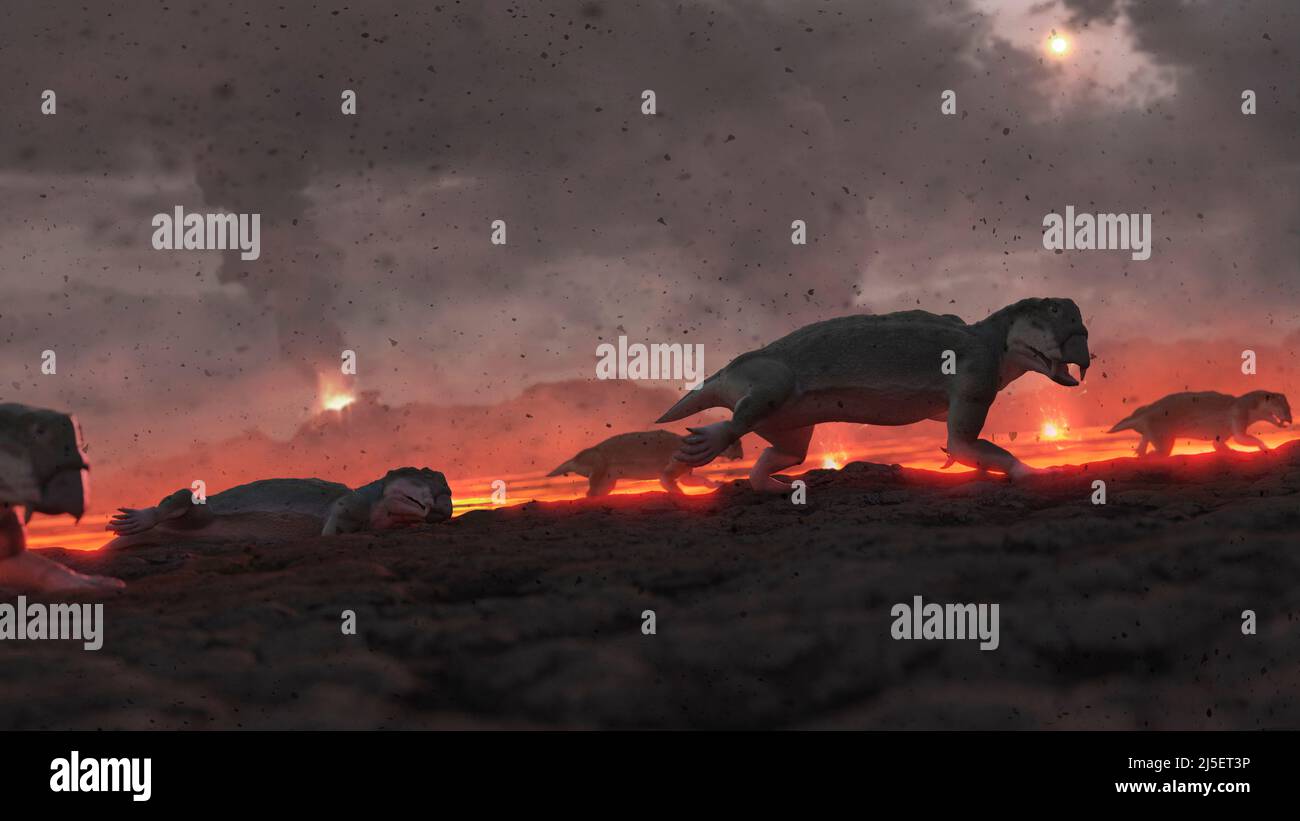Lystrosaurus and Permian extinction

Image details
Contributor:
Science Photo Library / Alamy Stock PhotoImage ID:
2J5ET3PFile size:
53.4 MB (762.4 KB Compressed download)Releases:
Model - no | Property - noDo I need a release?Dimensions:
5760 x 3240 px | 48.8 x 27.4 cm | 19.2 x 10.8 inches | 300dpiDate taken:
20 April 2022Photographer:
MARK GARLICK/SCIENCE PHOTO LIBRARYMore information:
Artwork depicting Lystrosaurus seen against the backdrop of the Permian extinction or 'Great Dying'. This was the most devastating extinction in Earth's history, occurring 252 million years ago, wiping out 83 percent of genera worldwide, and was most likely caused by the emission of gasses by the eruption of the large igneous province called the Siberian Trapps over a period of tens of thousands of years. Lystrosaurus - which was one of the lucky few to have survived the extinction - is not a dinosaur, but lived much earlier, during the Late Permian and Early Triassic periods. Species have been found in places as diverse as Antarctica, India, China, Mongolia and South Africa. Belonging to a group of animals called dicynodonts, Lystrosaurus had only two front tusk-like teeth. Depending on the species, the animal varied in length between 0.6 and 2.5 metres (2 to 8 ft)